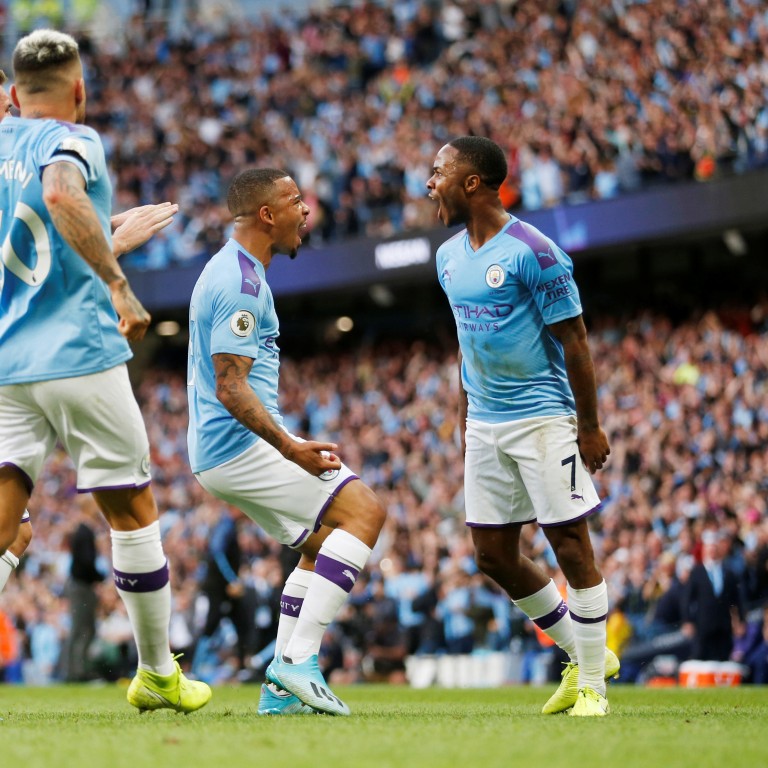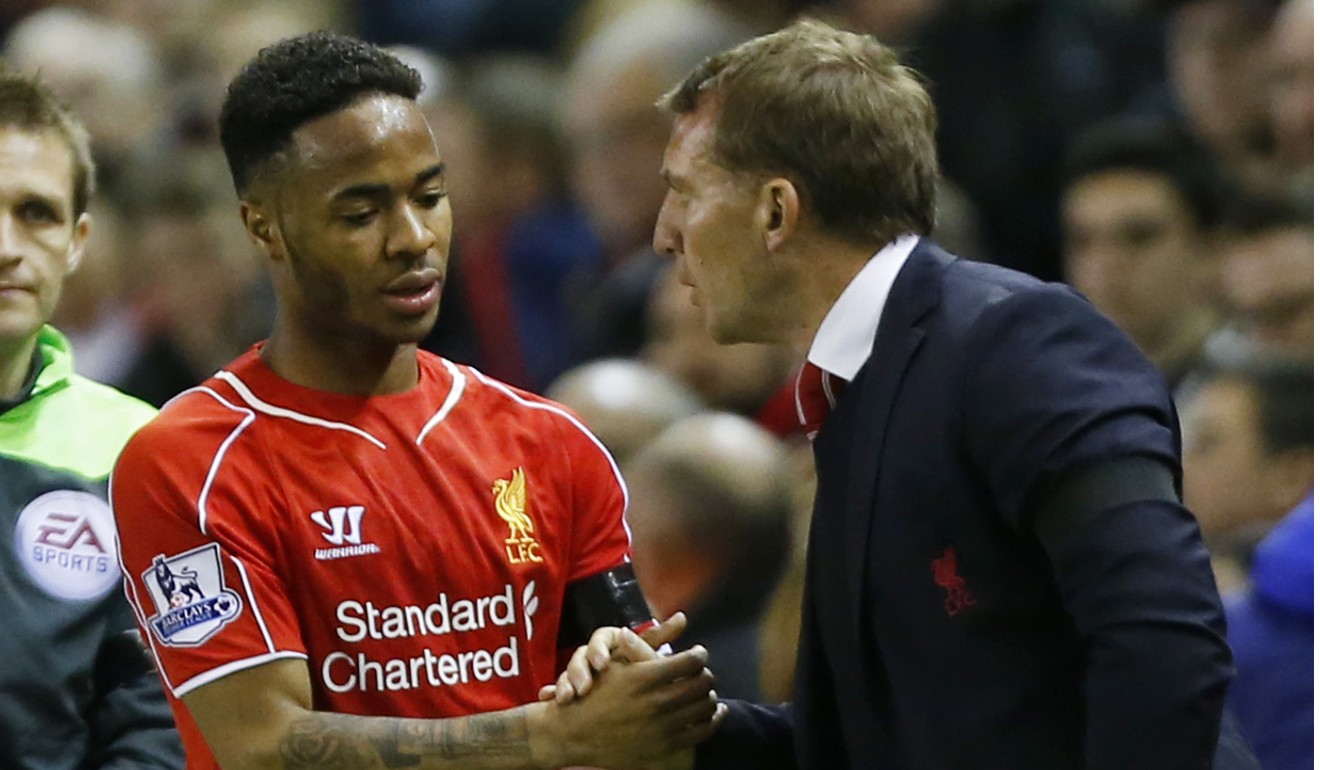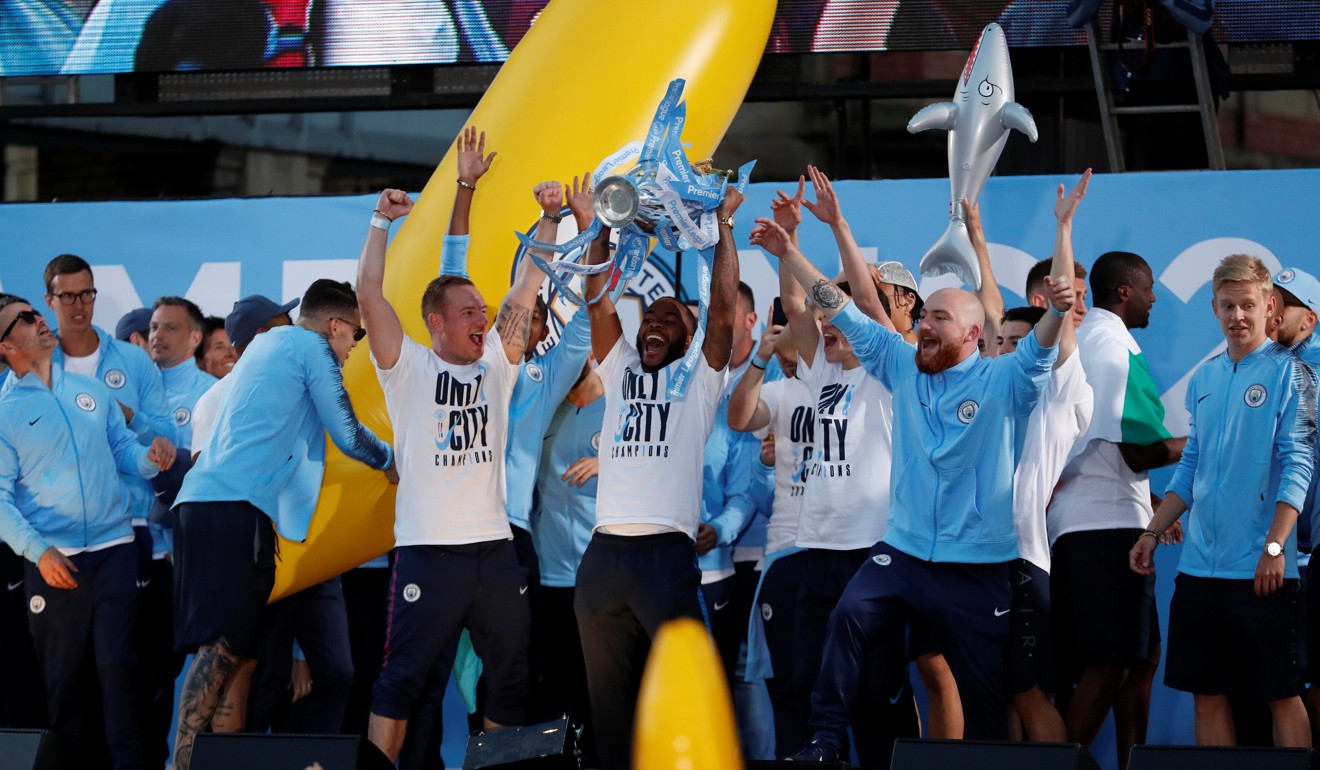
How Liverpool mishandled Raheem Sterling and let one of Europe’s best slip away to Manchester City too easily
- Prodigious England winger left the Reds back in 2015 and has won a host of silverware with the Citizens
- Brendan Rodgers had difficulties in his relationship with the youngster
In truth, he hardly ever did at Anfield. Rarely has a club mishandled such a prodigious talent. Sterling left a mere four months before Jurgen Klopp arrived on Merseyside. It is hard to believe that so few people at Liverpool thought the youngster was the team’s biggest asset.
There is no doubt Sterling could have handled his exit from Anfield better, but it is easy to see how his resentment grew. He was signed by Rafa Benitez from Queens Park Rangers’ academy nine years ago and Liverpool’s youth coaches were impressed by the way he developed. At first, he relied on pace to go past defenders, but as he moved up the age groups this became less effective. Sterling needed to develop new components to his game and, each time it looked like he might plateau, he found a new trick to confound opponents.
Kenny Dalglish planned to nurse the teenager into the side, but his sacking and the appointment of Brendan Rodgers changed things. Rodgers’ misguided power play in the 2012 summer transfer window – when the manager got rid of Andy Carroll and collapsed the deal for Daniel Sturridge – left the team short of attacking options. Sterling was forced to play more frequently than expected.
That brought up the question of money. Sterling’s wages were £30,000 per week. That is, to the fan in the stands, a huge amount of cash. The problem was that, by comparison with his teammates, the winger was underpaid. It is never greedy to want parity with your colleagues – it is a simple matter of respect. The lack of belief in Sterling was reflected in the club’s position on wages throughout his time at Liverpool. Stewart Downing, who was frequently consigned to the bench, was earning more than double.
Later on, Sterling asked for the same wage – £140,000 – as the frequently injured Sturridge, who was the club’s highest earner. The offer that came back was £40,000 lower.
It is hard to believe someone with such exceptional ability would be allowed to leave Liverpool so easily now
Fenway Sports Group, the owners, saw Sturridge as the face of the club and the talisman to replace Luis Suarez. The striker had the ability and the engaging personality to carry it off, but he could not get on to the pitch often enough. Knock after knock kept Sturridge from fulfilling his potential. Sterling was different. He is resilient.

Rodgers, at least in the first stages of his relationships with players, is an excellent motivator, yet his approach never really worked with Sterling. It is intriguing to speculate how Klopp might have dealt with the winger. Instead, Liverpool pocketed what now looks like a paltry £49 million (US$62.9 million, HK$492.5 million) and City gained a player who was set to develop into England’s brightest star.
There were flaws in Sterling’s game when he left Anfield, but he has worked hard to address them. His shooting has got stronger and his crossing more precise. Under Pep Guardiola’s tutelage he has become more tactically intelligent.
Liverpool did not come out of the deal too badly. They used £29 million of the money to buy Roberto Firmino from Hoffenheim. That turned out to be a bargain. This was during the period when the transfer committee was in operation and Firmino was the choice of Michael Edwards, who is now the club’s sporting director. Rodgers was allowed to spend a portion of the cash to bring Christian Benteke to Anfield for £32 million. That investment did not work so well.

The other deal that summer was James Milner going in the opposite direction to Sterling, leaving the Etihad on a free transfer. Milner has been a brilliant acquisition and has been worth every penny, but Liverpool’s logic was strange. They paid the then 29-year-old £150,000 per week, usurping Sturridge as the club’s top earner. The midfielder was being paid the Premier League’s going rate for his position, unlike most Liverpool players at the time, but the refusal to give Sterling a realistic pay rise in those circumstances seems perverse.
Liverpool at Christian Purslow’s Villa is a reminder for supporters of darker days gone by
The transfer worked out for Sterling, He has won a clutch of medals at City and continues to develop.
Any lingering regrets at Anfield were swept away by the Champions League success in June. Yet it is hard to believe someone with such exceptional ability would be allowed to leave Liverpool so easily now.
Klopp has more control and a better grasp of recruitment than Rodgers. FSG are no longer infatuated with a single player as they were with Sturridge. Now their faith is with the manager. Anfield is run in a much more coherent manner than when the winger departed for City.
Liverpool misjudged the Sterling situation. Klopp will aim on Sunday to make sure it does not come back to haunt them.

